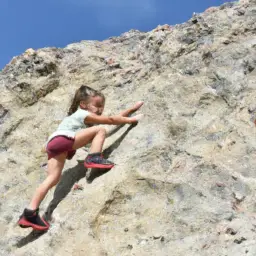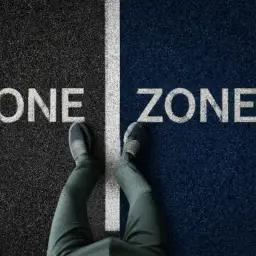Do you ever feel like you’re not good enough at something, so why even bother trying? Or maybe you believe that you were born with a fixed set of skills and abilities that can’t be improved upon. These are examples of a fixed mindset, a belief that your intelligence and talents are predetermined and cannot be changed.
But what if you could change that mindset to a growth mindset, where you believe that with effort and perseverance, you can develop your skills and abilities? This shift in mindset can have a powerful impact on your education and future success.
In this article, we will explore the power of a growth mindset in education and how it can nurture students’ potential. We’ll look at the benefits of a growth mindset, strategies for fostering it in students, and the role of teachers and parents in supporting this mindset. We’ll also discuss how a growth mindset can help students overcome obstacles and challenges and lead to long-term benefits in their academic and personal lives.
So, whether you’re a student, educator, or parent, read on to discover how a growth mindset can transform the way you approach education and unlock your full potential.
Key Takeaways
- A growth mindset is more beneficial than a fixed mindset in education.
- Strategies such as personalized feedback, collaboration, and overcoming obstacles with a growth mindset can help nurture students’ potential.
- Teachers and parents play an important role in fostering a growth mindset in students.
- A growth mindset can lead to improved well-being, mental health, motivation, and perseverance, as well as positive impacts on society and community.
Understanding the Difference Between a Fixed and Growth Mindset
If you’re not sure what kind of mindset you have, it’s important to know that there’s a big difference between a fixed and growth mindset.
A fixed mindset is when you believe that your abilities are limited and cannot be changed. For example, if you think that you’re just not good at math and never will be, that’s a fixed mindset. This type of thinking can hold you back and prevent you from reaching your full potential.
On the other hand, a growth mindset is when you believe that your abilities can be developed through hard work and dedication. This means that you embrace challenges and see them as opportunities to learn and improve.
Case studies have shown that students with a growth mindset are more likely to take on challenges, persevere through obstacles, and achieve academic success. By fostering a growth mindset in your students, you can help them reach their full potential and become lifelong learners.
Benefits of a Growth Mindset in Education
By embracing the idea that one’s abilities can be developed through dedication and hard work, learners can cultivate a passion for learning and ultimately achieve greater success in their academic pursuits. This is the essence of a growth mindset, which has been found to have numerous benefits in education. Research findings show that students with a growth mindset tend to have higher academic achievement, better grades, and a greater sense of resilience when faced with challenges.
Real life examples of the power of a growth mindset are abundant. For instance, famous figures such as Michael Jordan and Thomas Edison are known for their perseverance and determination in the face of failure. They did not let setbacks discourage them, but instead used them as opportunities to learn and grow. By adopting a growth mindset, students can also develop the same kind of resilience and determination to succeed in their own academic pursuits. The table below summarizes some of the key benefits of a growth mindset in education.
| Benefit | Description |
|---|---|
| Higher academic achievement | Students with a growth mindset tend to perform better in school and achieve higher grades. |
| Increased resilience | Students with a growth mindset are better equipped to handle challenges and setbacks, and are more likely to persist in the face of difficulty. |
| Greater motivation | Students with a growth mindset are more likely to be motivated to learn and improve, as they see effort and hard work as key to success. |
Strategies for Nurturing a Growth Mindset in Students
To foster a mindset of continuous improvement, you should encourage your pupils to set achievable goals, embrace challenges, and learn from their mistakes. Teaching effort is also essential in nurturing a growth mindset.
When students understand that their effort, rather than their innate ability, is what leads to success, they are more likely to persevere in the face of difficulty. Encouraging mistakes is another strategy for nurturing a growth mindset in students.
When students are not afraid to make mistakes, they are more likely to take risks and try new things. This can lead to greater creativity and innovation. Additionally, when mistakes are seen as opportunities to learn and grow, students are more likely to continue learning and developing their skills.
By embracing a growth mindset, students can unlock their full potential and achieve great things.
The Role of Teachers and Parents in Fostering a Growth Mindset
As a teacher or parent, you play a vital role in helping your child develop a belief in their ability to learn and grow. By using collaborative approaches, you can create a classroom or home environment that fosters a growth mindset.
Encourage your students or children to work together and exchange ideas. This way, they can learn from each other and see that everyone has something valuable to contribute.
Another way to foster a growth mindset is by providing personalized feedback. Take the time to give specific feedback on their strengths and areas for improvement. When giving feedback, focus on the process rather than just the outcome.
For example, instead of just praising a student for getting a good grade, praise them for their hard work and effort that led to that grade. This way, they will see that hard work and effort can lead to success, and they will be more motivated to continue learning and growing.
Overcoming Obstacles and Challenges with a Growth Mindset
When obstacles and challenges arise, you must embrace a flexible and adaptable approach, allowing yourself to pivot and adjust your strategy to overcome any setbacks and achieve your goals. Developing resilience is key, as it will enable you to bounce back from setbacks and keep moving forward.
Remember that failure is not a reflection of your worth, but an opportunity to learn and grow. Embracing failure can be difficult, but it’s essential to develop a growth mindset. Instead of giving up, use failure as a chance to reflect on what went wrong and how you can improve in the future.
To overcome obstacles with a growth mindset, it’s important to stay focused on your goals and remain optimistic. Avoid getting discouraged by setbacks and keep pushing yourself to try new things. Don’t be afraid to ask for help or seek advice from others who have faced similar challenges.
Remember that every obstacle is an opportunity to learn and grow, and that the process of overcoming challenges can be just as valuable as achieving your goals. With a growth mindset, you can turn any obstacle into an opportunity for growth and success.
Long-Term Benefits of a Growth Mindset in Education
When you cultivate a growth mindset in education, you open yourself up to a host of long-term benefits.
Not only will you experience improved well-being and mental health, but you’ll also be more likely to achieve career and life success.
Additionally, your growth mindset will have a positive impact on society and the communities around you.
Improved Well-Being and Mental Health
Enhancing students’ potential through a growth mindset approach can lead to enhanced well-being and improved mental health. By incorporating mindfulness practices and social emotional learning techniques, students learn how to manage their emotions and develop a positive outlook in life.
Mindfulness practices, such as breathing exercises and meditation, help students become more aware of their thoughts and feelings. These practices also improve their focus and concentration, which in turn, helps them perform better in school.
Social emotional learning techniques, on the other hand, help students become more empathetic and understanding of others. Through these techniques, students learn how to communicate effectively, solve problems, and build positive relationships with their peers. This leads to a more positive school environment, where students feel more supported and valued.
Overall, by nurturing a growth mindset in students, we can help them develop the skills and mindset necessary to lead happy, healthy, and successful lives.
Increased Career and Life Success
Congratulations! You’ve taken an important step towards unlocking your full potential by improving your well-being and mental health through adopting a growth mindset. But it doesn’t stop there. The power of a growth mindset extends far beyond personal development and can have a significant impact on your career and life success.
Firstly, adopting a growth mindset can have a positive economic impact. Those who believe that their abilities can be developed through hard work and dedication are more likely to take risks and pursue new opportunities. This can lead to increased innovation and entrepreneurship, which can stimulate economic growth. Additionally, individuals with a growth mindset are more likely to persevere in the face of challenges and setbacks, leading to greater resilience and adaptability in the workplace.
Secondly, developing a growth mindset can have cultural implications. By embracing the idea that our abilities are not fixed, we open ourselves up to new experiences and perspectives. This can lead to greater empathy and understanding of others, as well as increased collaboration and teamwork. In today’s globalized world, these skills are increasingly important as we navigate diverse cultures and work with people from all walks of life.
So don’t stop now. Keep cultivating your growth mindset and watch as it leads you to greater success and fulfillment in all areas of your life. Remember, the power to reach your full potential is already within you.
Positive Impact on Society and Communities
You can make a positive impact on society and your community by embracing the idea that change is possible and taking action towards creating a better world for everyone. By cultivating a growth mindset, you can understand that your abilities and intelligence can be developed through hard work and dedication. With this mindset, you can take on challenges and persevere through difficult situations, which can ultimately lead to building resilience and making positive contributions to society.
Your positive impact on the economy can also be a result of your growth mindset. As you continue to develop your skills and knowledge, you can contribute to the growth and success of your community through your work and entrepreneurial endeavors. By seeking out opportunities to learn and grow, you can become a valuable asset to your community and help to create a thriving economy that benefits everyone. Embracing a growth mindset is not only beneficial for your personal success, but it can also have a positive impact on society and the world around you.
Frequently Asked Questions
What are some common misconceptions about growth mindset that educators should be aware of?
Misconceptions about growth mindset are common among educators, so it’s important to be aware of them.
One common misconception is that having a growth mindset means that students can learn anything without effort or hard work. This is not true, as effort and hard work are still necessary for growth.
Another misconception is that growth mindset is only about positive thinking and ignoring negative feedback. In reality, growth mindset involves embracing challenges and learning from failure.
Strategies for educators to combat these misconceptions include teaching students about the brain’s ability to grow and change, providing opportunities for students to take risks and learn from mistakes, and emphasizing the importance of effort and hard work in the learning process.
How can a growth mindset positively impact a student’s social and emotional development?
To positively impact a student’s social and emotional development, it’s important to model a growth mindset and foster a growth mindset classroom culture. By demonstrating a willingness to learn from mistakes and embrace challenges, you’re showing students that it’s okay to fail and that growth is possible.
Encouraging students to set goals and providing feedback that focuses on effort and progress, rather than just the end result, can also promote a growth mindset. Additionally, creating a safe and supportive classroom environment where students feel comfortable taking risks and collaborating with others can further support their social and emotional development.
By emphasizing the importance of a growth mindset, you can help students develop resilience, perseverance, and a love of learning that will serve them well both in and out of the classroom.
Are there any specific learning disabilities or disorders that may affect a student’s ability to develop a growth mindset, and how can educators address these challenges?
If you’re an educator, it’s important to recognize that students with learning disabilities may face challenges in developing a growth mindset. However, by providing accommodations and supporting neurodivergent learners, you can create inclusive classrooms that foster a growth mindset for all students.
Some specific learning disabilities that may impact a student’s ability to develop a growth mindset include dyslexia, ADHD, and autism spectrum disorders. To address these challenges, educators can provide accommodations such as assistive technology, alternative assessments, and personalized learning plans.
Additionally, it’s important to create a safe and supportive classroom environment that celebrates individual differences and encourages a growth mindset for all learners.
What role do cultural and societal factors play in shaping a student’s mindset, and how can educators address any biases or stereotypes that may be hindering a student’s growth mindset?
Addressing stereotypes and overcoming prejudices is crucial in promoting a growth mindset among students.
Cultural sensitivity plays a significant role in shaping a student’s mindset, and educators must be aware of any biases or stereotypes that may hinder a student’s growth.
It’s essential to create a safe and inclusive environment where every student feels valued and respected, regardless of their background.
Educators must actively work to dismantle any prejudices and stereotypes that may exist in the classroom or school community.
This can be achieved through promoting diversity and inclusivity, encouraging open and honest communication, and providing opportunities for students to learn about different cultures and perspectives.
By addressing these issues, educators can help students develop a growth mindset and reach their full potential.
How can schools and educators measure the effectiveness of growth mindset interventions and programs, and what metrics should be used to evaluate success?
To measure the impact of growth mindset interventions and programs, educators can use data analysis to evaluate success. Metrics such as academic performance, attendance rates, and student engagement can be measured and compared before and after the implementation of growth mindset programs.
Additionally, surveys and interviews can be conducted to gather subjective feedback from students and teachers on the effectiveness of these interventions. It’s important to use multiple metrics to gain a comprehensive understanding of the impact of growth mindset programs and to continuously assess and adjust these interventions based on the data collected.
Conclusion
So, now you understand the power of a growth mindset in education. By cultivating a growth mindset in yourself and your students, you can unlock their potential and help them achieve greatness.
Remember, a growth mindset is not just about academic success, but about developing resilience, perseverance, and a love of learning that will serve students well throughout their lives.
As a teacher or parent, you’ve got the ability to shape the mindset of the next generation. Use the strategies and tips outlined in this article to encourage a growth mindset in your students, and watch as they blossom into confident, capable learners.
With a growth mindset, anything’s possible!




















































































































